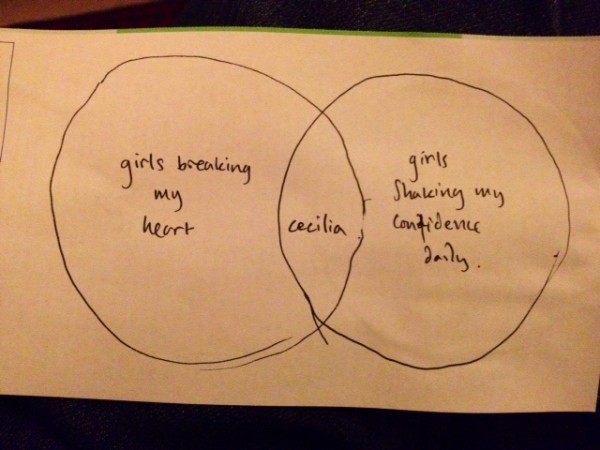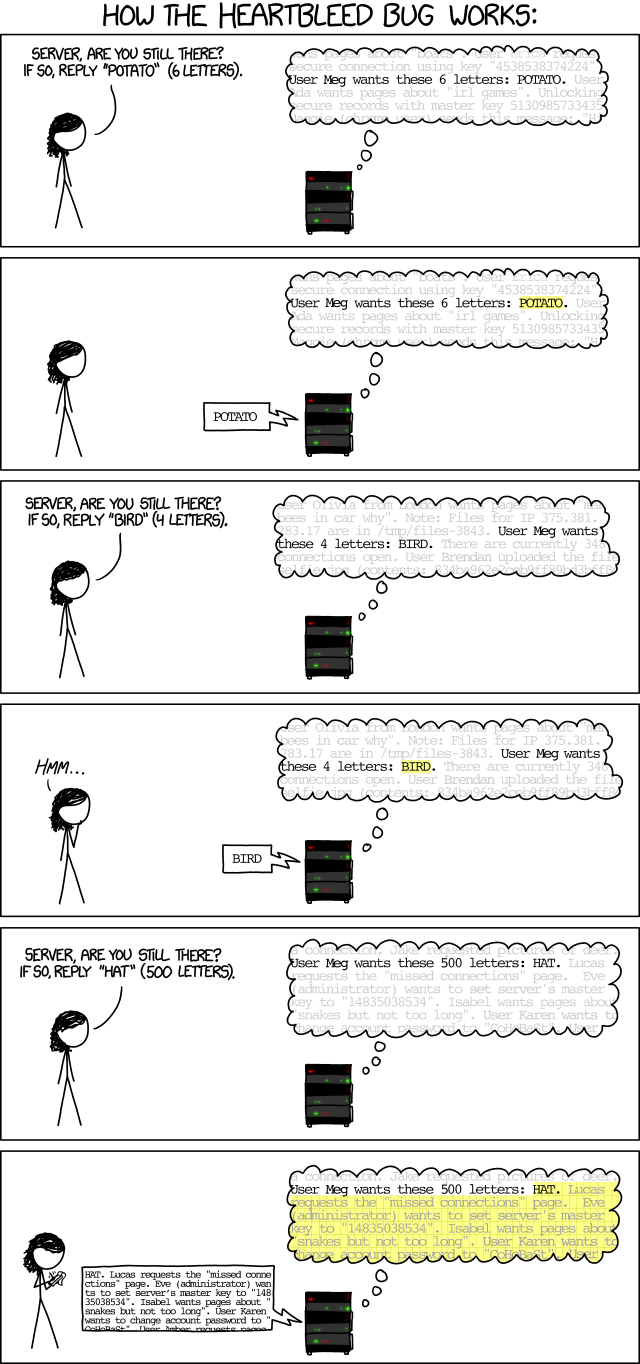In the countryside around Newsells Park Stud, everything is tailored to equine comfort and happiness.
How heartbleed works
Everybody has probably now heard of the heartbleed bug which affects hundreds of thousands of computers across the net. There are some lists out there of the popular services which are affected – see this page, for example – and it’s worth noting that you should change any passwords on Facebook, Google, IFTTT, Tumblr and Yahoo at the very least.
But have you wondered how it works? What does a ‘memory-leak vulnerability’ actually mean? Well, of course, nobody explains it better and more briefly than XKCD:
Oh, we do like to be beside the seaside
Mac projector hint of the day
Something I’ve just discovered…
If you plug a MacBook Pro running Mavericks into an external display, it will try to select a screen resolution, or offer you a list based on what the display says it can manage.
But, particularly if you’re connected by VGA or through some kind of extender, the resolutions offered may be very limited. This is what I got from a reasonably modern TV connected by VGA to my Thunderbolt-to-VGA adapter in a university meeting room:
Even when the resolution is high enough, these are all 4:3 aspect ratios and don’t make good use of anything wide-screen.
However, if you hold down option/alt and click on the ‘Scaled’ button (even if it’s already selected), you get a whole lot more options:
There’s no guarantee that the screen/projector will be able to cope with any particular resolution selected here, but there’s a pretty good chance, for example, that a modern TV will at least do 1280×768, and that certainly worked for me.
Hope it’s useful!
Morning
The floods are over
Venn I come back to bed…
My nephew James came up with this; I think it’s great:

Here’s my attempt to follow his lead, less successfully, I think!
Make your corporate video stand out!
It could be something awesome like this:
Thanks to Mark Littlewood for the link
Objects in the viewfinder may be closer than they appear

Is that the 18-55 f/2.8 you’re using? Looks tasty…
Practise good wiki hygiene
Katie Cunningham has written a great article entitled ‘Your wiki is a dump‘, outlining what goes wrong with wikis, and how to fix them.
I have seen this over and over again. Wikis need work, and they need someone with the guts (and/or the authority) to take a set of shears to them on a regular basis. If you have that, you can have a great resource. If not, you can have a nightmare.
The Watcher in the Water
Tilly and I were walking yesterday on a nice meadow near the gates of the old Mines of Moria – very peaceful, no other hobbits around – when suddenly a terrifying tentacled creature rose from the depths.

It reached out for us, fixing us with a ravenous, menacing eye as it opened its gaping maw…

We ran for our lives… stopping only to capture a couple of snaps for Status-Q, of course.
Breaking good
 I keep hearing about research that shows how your life will be dramatically shorter and more problematic if you spend too much of it sitting in front of a computer.
I keep hearing about research that shows how your life will be dramatically shorter and more problematic if you spend too much of it sitting in front of a computer.
Some of this, no doubt, is encouraged by the manufacturers of the standing desks, and even treadmill desks, which are to the young entrepreneurs of today what the Aeron chair was to the dot-com startups of yesteryear.
But whether or not you believe the more worrying claims of reduced life expectancy, I think we can agree that it’s not a bad idea to get up and stretch your legs from time to time. Maybe have a bottle of chilled water, if you’re from California, or a nice cup of tea, if you’re British.
So I’ve been rather taken with a little Mac app called BreakTime, which will pop up and nag you when you’ve been working at your computer for too long at a stretch. You can choose the time periods: mine requires me to have a four-minute break after 56 minutes, for example, and you have some control over how persistent it will be: are you allowed to dismiss it before the four minutes are up? It also makes sensible decisions if you leave the machine of your own accord first, and resets the timer when you return.
I find, to my surprise, that I really like it: I’ve put it on all my machines, and what it highlights is just how difficult it is to keep track of time myself. I’m amazed how quickly an hour of sitting still can fly by when I’m deep in concentration. Even if I do little more than stand up and tidy some things off my desk, I’m sure it’s a good discipline.
There are several other similar utilities out there, but BreakTime works well for me. Recommended.
Update: Tim Green, on Facebook, pointed out Workrave, which does something similar for Windows and Linux. I’m linking to it here because, of course, you can’t search Facebook – even your own history (something I still find incomprehensible).
© Copyright Quentin Stafford-Fraser










Recent Comments